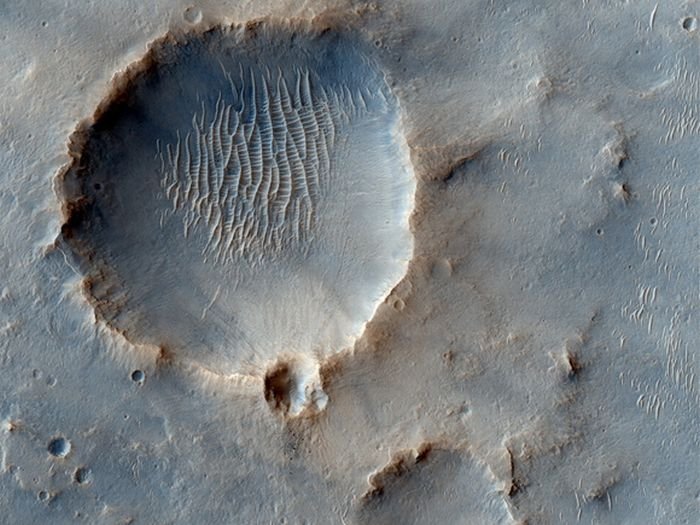|
|
Mars Surface
|
During the Solar system formation, Mars was created out of the protoplanetary disk that orbited the Sun as the result of a stochastic process of run-away accretion. Mars has many distinctive chemical features caused by its position in the Solar System. Elements with comparatively low boiling points such as chlorine, phosphorus and sulphur are much more common on Mars than Earth; these elements were probably removed from areas closer to the Sun by the young Sun's powerful solar wind.
After the formation of the planets, all were subjected to the "Late Heavy Bombardment". About 60% of the surface of Mars shows an impact record from that era. Much of the rest of the surface of Mars is probably underlain by immense impact basins that date from this time—there is evidence of an enormous impact basin in the northern hemisphere of Mars, spanning 10,600 km by 8,500 km, or roughly four times larger than the Moon's South Pole-Aitken basin, the largest impact basin yet discovered. This theory suggests that Mars was struck by a Pluto-sized body about four billion years ago. The event, thought to be the cause of the Martian hemispheric dichotomy, created the smooth Borealis basin that covers 40% of the planet.
The geological history of Mars can be split into many periods, but the following are the three primary periods:
• Noachian period (named after Noachis Terra): Formation of the oldest extant surfaces of Mars, 4.5 billion years ago to 3.5 billion years ago. Noachian age surfaces are scarred by many large impact craters. The Tharsis bulge, a volcanic upland, is thought to have formed during this period, with extensive flooding by liquid water late in the period.
|
|









